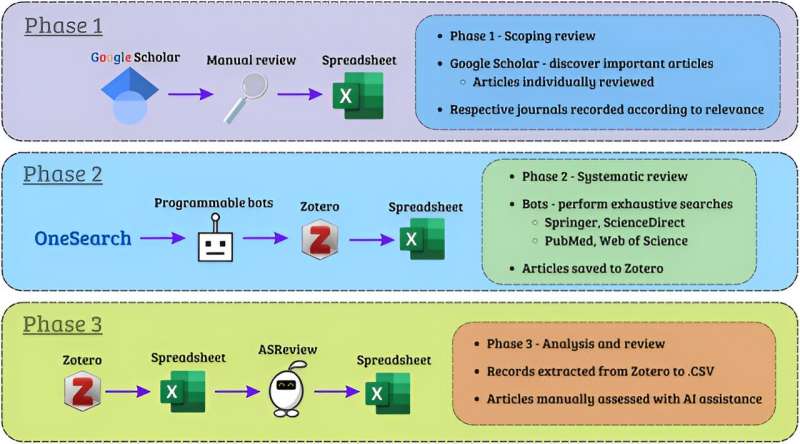This article has been reviewed according to Science X's editorial process and policies. Editors have highlighted the following attributes while ensuring the content's credibility:
fact-checked
trusted source
proofread
Harnessing AI and advanced imaging for precision plant stress management

Plant phenotyping is key to improving crop production, especially as global food demands rise. Recent advances in AI and imaging sensor technologies offer promising methods for early and accurate plant stress detection, overcoming the limitations of traditional visual inspections.
However, challenges persist, including the need for precise and robust AI algorithms, the requirement for diverse, high-quality datasets for AI training, the high cost and complexity of advanced imaging sensors, and the limited data captured by more accessible sensors like RGB cameras. These challenges highlight the ongoing need for research to improve the accessibility, reliability, and efficacy of these technologies for agricultural applications.
In March 2024, Plant Phenomics published a review article titled "Advancements in Imaging Sensors and AI for Plant Stress Detection: A Systematic Literature Review." In this review, researchers present a comprehensive analysis of AI and imaging technologies in plant stress detection using a systematic literature review (SLR) methodology. Their investigation, informed by a set of predetermined research questions, focused on exploring the utilization of imaging sensors and AI in detecting plant stress symptoms, analyzing trends, and identifying current challenges.
This review identified a total of 2,704 studies from four major databases using a tiered keyword search strategy and innovative programmable bots for data retrieval. Among these, 262 studies were meticulously reviewed, revealing a marked preference for RGB sensors due to their accessibility, cost-effectiveness, and versatility across various research settings.
Despite the widespread application, RGB sensors are not without limitations, particularly when capturing nuanced stress indicators, leading researchers to increasingly turn to spectral imaging sensors. These sensors offer enhanced insight into plant physiology by capturing data across a broad spectral range, albeit at a higher cost and with more complex data processing requirements.
Furthermore, their analysis indicated a growing trend towards integrating AI, especially DL, in plant stress research, propelled by the availability of large open-source datasets like PlantVillage. This trend underscores a shift towards more sophisticated analysis methods capable of handling the complex nature of stress symptoms and their detection.
Notably, the review highlights an emerging interest in exploring alternative imaging technologies, such as fluorescence, thermal, satellite imaging, and LiDAR, for their unique capabilities in stress detection, despite their current underutilization due to various practical constraints.
The review also delved into the AI algorithms deployed in plant stress research. It found that DL, particularly CNNs, were widely adopted for image classification and feature extraction tasks. Despite the prominence of DL, ML algorithms like SVM and ANN remain widely used, particularly in conjunction with spectral imaging data, due to their efficacy in simplifying result interpretation and handling limited spectral datasets effectively.
In conclusion, the SLR not only provides an overview of the current landscape of AI and imaging sensor applications in plant stress detection but also predicts an expanding role for spectral imaging and DL in advancing plant phenotyping. It calls for further exploration of multimodal approaches, integration of emerging imaging technologies, and the development of more robust AI models capable of generalizing across diverse plant species and stress conditions.
As AI and imaging technologies continue to evolve, their integration holds promise for significantly enhancing our ability to understand, detect, and manage plant stress. This paves the way for more resilient agricultural practices.
More information: Jason John Walsh et al, Advancements in Imaging Sensors and AI for Plant Stress Detection: A Systematic Literature Review, Plant Phenomics (2024). DOI: 10.34133/plantphenomics.0153
Provided by NanJing Agricultural University





















